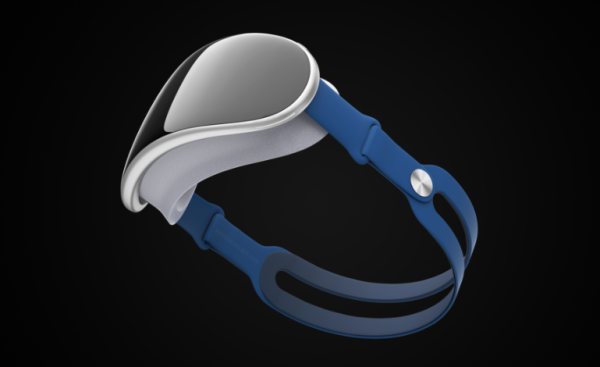Major Apple Headset Leak Brings Fresh Details and Confirms Previous Rumors
Leaks published by The Information suggest Apple’s much-rumored upcoming XR headset contains a dial used to shift between realities, among other features.
The Information is reporting that it has received an insider scoop on the development of Apple’s much-talked-about upcoming XR headset. The report has a number of technical details about the headset, including fresh details that are coming out for the first time.
Here are the key points from The Information scoop: –
- The materials used in the Apple mixed reality headset include aluminum, glass, and carbon fiber. The headset is also lightweight and compact.
- The Apple XR headset is powered by a waist-mounted battery which is also replaceable when the device is in operation. Apple’s former chief designer Jony Ive reportedly came up with the device’s design.
- It features two built-in processors including the main SoC (M2) and the processor for video processing (ISP). The two processors are manufactured in a 5nm process and also feature a proprietary streaming codec.
- The device’s ISP processor can stream and de-warp distorted external images coming from integrated cameras to the headset, at low latency. This is important for high-quality mixed reality uses. Apple acquired NextVR which could come in handy in this. The ISP chip uses a custom-made and fast working memory made by SK Hynix.
- There is also an H2 chip integrated into the headset to provide ultra-low latency audio transmission to the AirPod Pros. It doesn’t have a jack plug as the conventional Bluetooth headphones won’t deliver optimal functions with this.
- There are, however, integrated speakers in the headband but the sound coming from these can be heard by third parties which raises privacy concerns. The headband is reportedly made from the same material used in Apple Watch’s sports wristbands. There is supposedly an alternative headband for developers that you can connect to a Mac.
- It features a quick dial similar to the Apple Watch that allows users to seamlessly switch between virtual reality and the physical environment. However, this button doesn’t have haptic feedback.
- If you have an eyesight problem, you can insert corrective lenses into the Apple headset using magnets.
- The lens distance is automatically adjustable to the eye distance of the user wearing the headset through an integrated motor.
- It reportedly has a field of view of 120 degrees. This is a bit wider than the 106 degrees for Meta Quest Pro. A 120-degree field of view is also much wider than those of other open augmented reality headsets such as Magic Leap 2 and the HoloLens which has a field of view of about 50 degrees.
- The Information report states that Apple wants hand tracking as an interface although it is currently trying out alternative input devices like some form of a thimble and a wand.
- Apple is reportedly not focusing on virtual reality games with its first-generation headset. The product does not also include a gaming controller. Purely virtual reality experiences will be provided with Unity, the gaming engine, as its partner.
- Existing iOS apps can be displayed in 2D by the Apple headset.
Apple Betting Big on a ‘Killer’ XR Video Calls App
The Information report also confirms that the Apple headset features an outward-facing display that will show the wearer’s facial expressions to outsiders. This feature is meant to minimize the feeling of isolation when the user is wearing the headset. This outward-facing screen reportedly consumes little power and has a low refresh rate, which is comparable to the always-on mode in the Apple Watch.

It had been reported earlier that the headset would use a Sony 4K micro-OLED display for the central part of the image per eye. That report is now confirmed by the latest leaks to The Information. An LG display in the peripherals complements this display according to earlier reports. It also integrates eye tracking with foveated rendering which optimizes the rendered image at the focal point the eye is gazing at and saves on power consumption.
The report also says the Apple headset has two LiDAR scanners for use in short and long distances. It is also built with over a dozen inward and outward in-built cameras and is even capable of detecting the legs of the headset wearer.
Target use cases for the Apple headset include education and XR video conferencing applications with realistic avatars capable of accurately rendering facial and body movements. However, the avatar’s jaw and eyebrow movements are approximated by an AI processor according to available sensor data.
There are also plans for a transition between the Mac screen and the headset’s display such that a user can pull an app from the Mac screen and show it in 3D in the XR mode in the Apple headset.
The headset will cost approximately $3,000 according to its configuration. Thousands of the XR headset’s prototypes have already been built by Apple’s contract manufacturer Pegatron. It was initially scheduled to be launched in 2022 but that date was, obviously, pushed farther.
https://virtualrealitytimes.com/2023/01/04/major-apple-headset-leak-brings-fresh-details-and-confirms-previous-rumors/https://virtualrealitytimes.com/wp-content/uploads/2023/01/A-concept-render-of-the-Apple-headset-600x367.pnghttps://virtualrealitytimes.com/wp-content/uploads/2023/01/A-concept-render-of-the-Apple-headset-150x90.pngAppleBusinessHardwareLeaks published by The Information suggest Apple’s much-rumored upcoming XR headset contains a dial used to shift between realities, among other features. The Information is reporting that it has received an insider scoop on the development of Apple’s much-talked-about upcoming XR headset. The report has a number of technical details...Rob GrantRob Grant[email protected]AuthorVirtual Reality Times - Metaverse & VR
